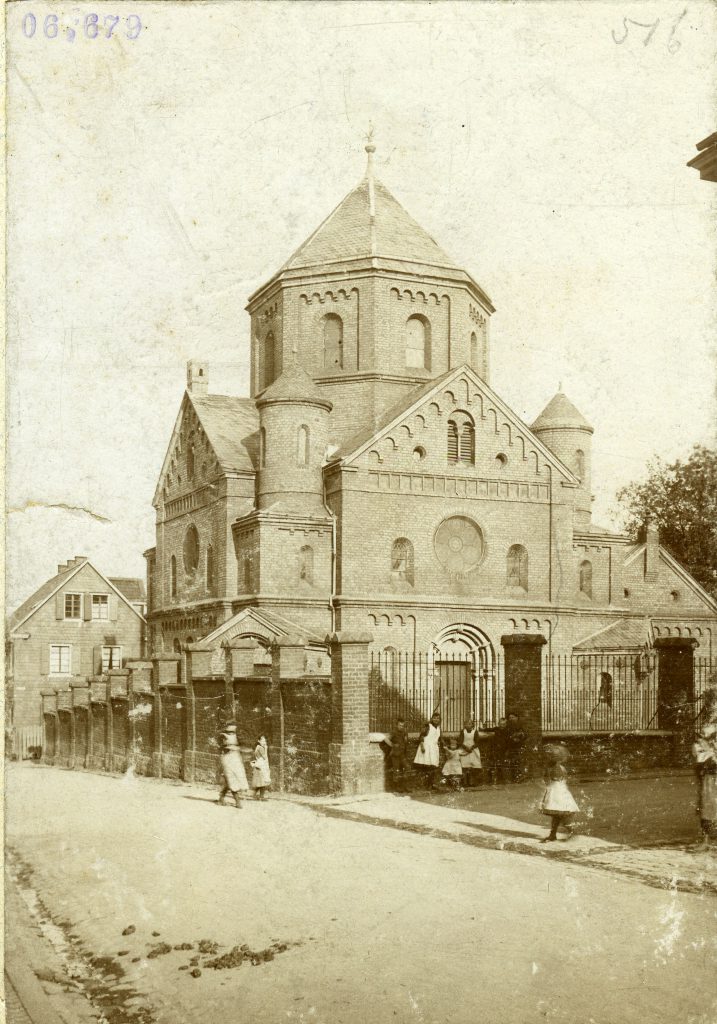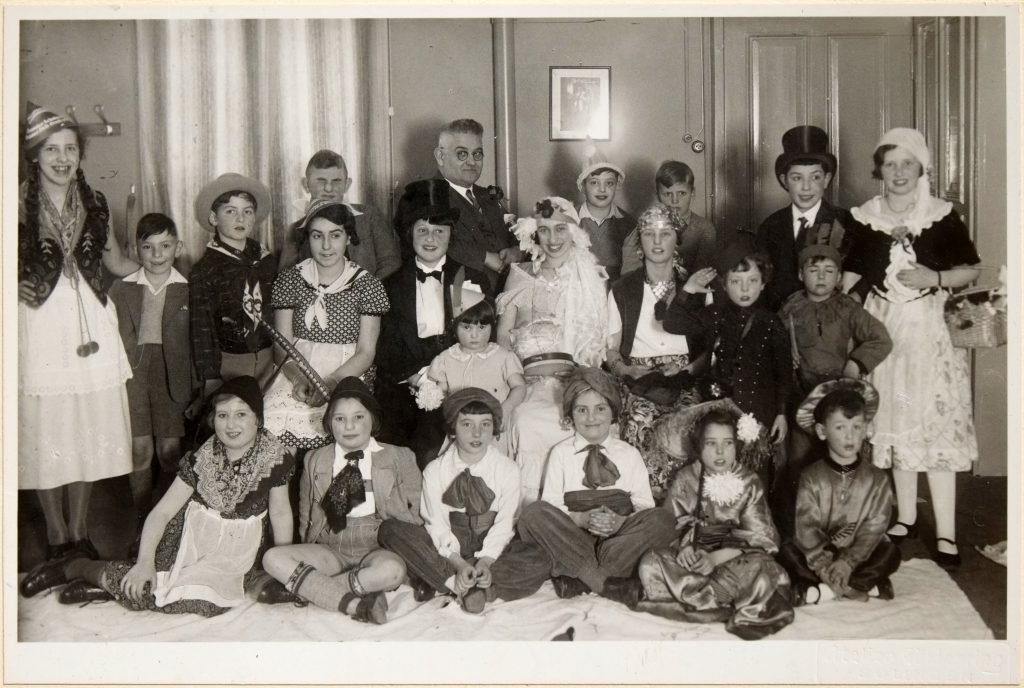In 1861, the synagogue congregation purchased a plot of land on Malteserstrasse, because the half-timbered house on Südwall, which the community had been using since 1787, had become much too small as a synagogue due to the sharp increase in the number of Jewish residents.
The financing of the new building took several years. In addition, the construction work was interrupted by the Franco-Prussian War, so that it was not until March 8, 1872 that the neo-Romanesque domed building with 90-100 seats for the men, sixty seats for the women, a classroom, and a residence for the teacher could be inaugurated. It was a solemn ceremony with a procession, in which both dignitaries of the city and the population of Solingen participated.
Rabbi Dr. Schwarz’s sermon was quoted in the newspaper Allgemeine Zeitung des Judenthums as stating that “in Solingen, famous for centuries for its productive activity, no better steel had ever been forged than that of brotherly love among all confessions; this is the best weapon against fanaticism.”
In November 1884, Max Joseph was employed as a prayer leader and teacher of the synagogue congregation. He held this office for nearly fifty years. When he was buried on October 26, 1933, he was carried to his grave by former students and escorted by the Solingen “Sänderbund,” of which he had been an honorary member.


Left: The Solingen synagogue on Malteserstrasse. Source: City Archive Solingen, RS 15816
Right: In 1935, the children of the Jewish community celebrated the Purim festival with cantor Jacob Okunski. Source: Bella Tabak Altura
Timeline Solingen
- ↑ Gustav Coppel is named an honorary citizen of Solingen – October 18, 1906
- ↓ Foundation of the steel goods company Alexander Coppel in Solingen – Juli 4, 1821
